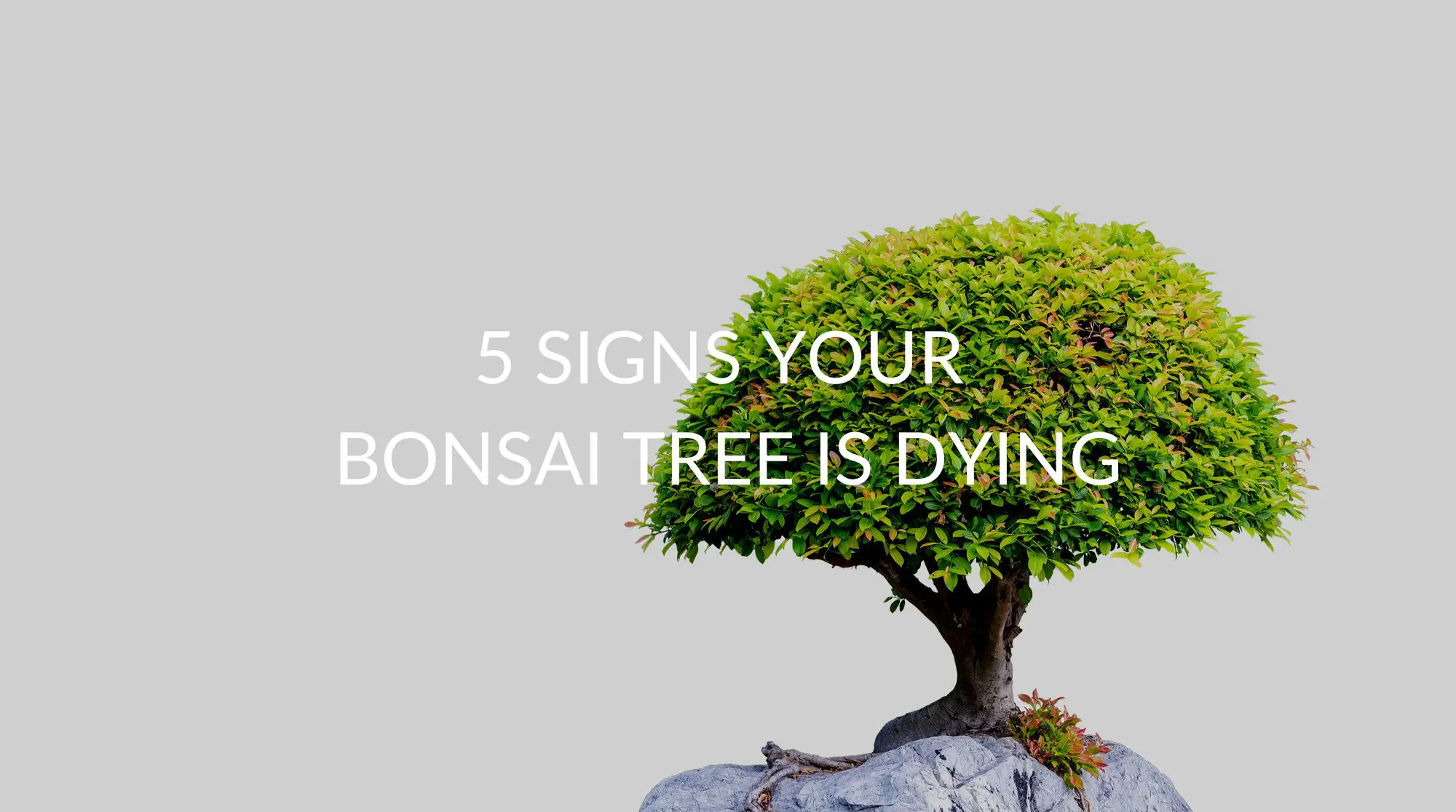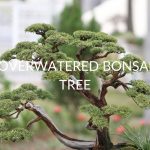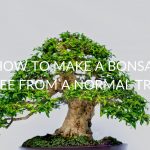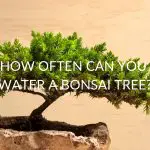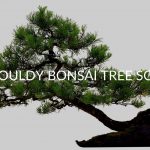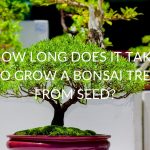Here are five warning signs that your Bonsai tree is dead or dying:
- It is dropping leaves or needles and is not a deciduous tree.
- The branches are all dry or brittle and not pliable.
- The roots are completely brown, black, or rotted.
- The leaves or needles are turning brown or yellow.
- When you remove a small patch of bark with your fingernail, the wood underneath looks dead.
You may be noticing one or more of these signs in your Bonsai tree. As soon as you notice any of these signs, it is imperative that you figure out what kind of tree you have so you can improve its conditions right away. If you act quickly, you may be able to save a live tree.
Don’t give up too soon. Read on for ways to identify if a tree is still alive and how to increase your chances of bringing it back to its former glory. It doesn’t hurt to try a number of strategies to help the tree out. You never know!
If it turns out your tree is dead, know that even expert growers lose trees. Bonsai is an art and discipline, and it is very likely you might lose trees along the way.
Is My Bonsai Tree Dead?
My Bonsai is Dropping Its Leaves or Needles
Some leaf drop is normal in Bonsai, as in all trees. If you begin to notice that your tree is dropping a lot of leaves all at once, that is a warning sign.
Sometimes you might notice that you have to clean up leaves around your Bonsai or in the pot. If that is the case and your tree does not drop its leaves in winter, make sure you try to diagnose the problem and fix your tree’s growing conditions.
My Bonsai has Dry Branches
Like with leaves, all trees will have some branches that die and dry out. Some Bonsai growers actually prize the look of dead wood on their trees.
However, if you cannot find any branches that are pliable, your tree is probably dead or close to death, and you should try to find the problem as soon as possible.
You can test the wood of the tree by scraping off a tiny patch of bark very carefully with your fingernail. If you see signs of a healthy green layer underneath, that may mean your tree can be saved.
You may need to do this in several different places on your tree.
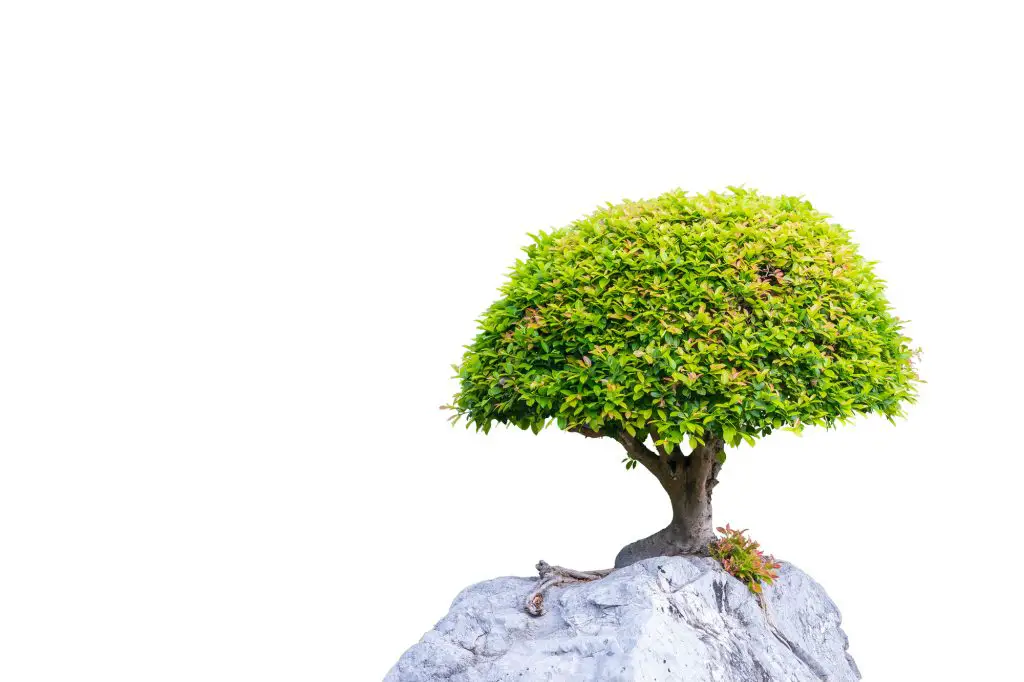
My Bonsai Has Black Roots
Root rot is a very common cause of death of Bonsai trees. Root rot is caused when the roots sit in water for too long. This might be due to inadequate drainage or overwatering.
When the roots get very damaged, they will not be able to carry nutrients to the tree, and it will drop leaves and die.
My Bonsai Leaves are Turning Brown or Yellow
Discolored leaves are a common way that Bonsai trees let you know they need something they aren’t getting.
Often the culprit is overwatering, underwatering, or insufficient light. You will need to learn what type of Bonsai species you have and then make sure you know how best to care for it. For example, most evergreen and deciduous Bonsai need to be grown most of the year outdoors.
Juniper, a common Bonsai species, will need to be placed outdoors in bright light or sun, or its needles will discolor and drop.
Here’s how you can save a bonsai tree with trunk rot:
I Forgot to Water My Bonsai Tree
If you went on vacation for several days and came back to a crispy tree, it is possible your tree is close to death due to underwatering. Remember, Bonsai are grown in very small pots that don’t retain much water. Frequent watering is necessary (it is up to you to determine how frequently).
If a Bonsai is completely dried out, you will need to submerge the pot in water until the bubbles stop rising. Then make sure you place it somewhere that it can fully drain. You may need to repeat this process.
Is My Bonsai Tree Dead Or Dormant?
Some Bonsai will drop their leaves naturally in autumn. The tree may appear dead during its dormant winter, but there are several ways to tell if a tree is dead or just dormant.
Is My Bonsai Deciduous?
Deciduous trees drop their leaves in the autumn, go dormant for winter, and rebud and releaf in spring. Many common Bonsai are deciduous trees, such as Azalea, Crabapple, Japanese Maple, and Chinese Elm.
Many of these trees will behave just like their full-sized counterparts in the fall. Japanese Maple, for example, may turn striking shades of red, yellow, or orange and then drop its leaves.
So we come back to one of the most important rules of Bonsai trees: know thy Bonsai. You will need to determine what species your tree is in order to know if it should naturally be losing leaves. You can find information on species identification here.
Look Under the Bark
Some gardeners call it the “fingernail test” or “scratch test.” One way to tell if your tree is dead is to scrape off some of the bark with your fingernail and see if there is a green layer underneath that appears healthy. If you go right from bark to wood, without any living green layer in between, that part of the tree is dead.
You can do this test on the branches and the trunk, but you may want to stick to inconspicuous spots on the tree so you won’t have bald patches if the tree survives.
My Bonsai Isn’t Growing
Bonsai growth is a slow process. You will probably notice growth in the spring as the tree buds. If you do not notice buds forming in early spring, or if the growth is very slow, it is possible the tree is unhealthy.
With Juniper, Spruce, or other evergreens, you will see small green tips form on your tree in the spring as it comes out of dormancy.
If you are planting a new Bonsai from a cutting, you may have removed most or all of the foliage. It is best to plant new cuttings in the spring when the trees are no longer dormant, but if you made your cutting in the fall, it might have gone dormant before growing foliage.
Are the Twigs and Branches Pliable?
If your tree is simply dormant, you will be able to bend the branches slightly without breaking them. If, however, the twigs break when you bend them slightly, those sections of the tree are dead. This doesn’t mean the entire tree is dead unless there are no healthy branches.
If it is very cold, be gentle with your tree. It may be more brittle in cold temperatures but should still have some give.
Is your Bonsai Wood Discolored?
Has the color of the branches or trunk changed? If it looked more brown and shiny before and now looks gray or flaky, it may be dead rather than dormant.
The bark of dormant trees tends to look the same year-round, though the foliage may change by season.
If your Bonsai tree is turning yellow, however, here are the reasons.
Why Is My Bonsai Tree Dying?
Should My Bonsai Be Outdoors?
Many Bonsai species need to be grown outdoors for most or all of the year. Common species like Juniper, Pine, and Japanese Maple will not survive well indoors.
More information about growing outdoor Bonsai can be found here. If you live in a very cold climate, you may need to protect the tree during the winter months.
If your Bonsai is currently indoors, it will need to adjust to being outdoors. Do not place it in full sunshine right away, but instead let it adapt to brighter light. You will also have to monitor its water needs, as water will evaporate differently outdoors and you may have to account for rainfall.
Insufficient Light
Many Bonsai species require long hours of bright light or full sunlight. You will need to determine what amount of light is sufficient for your species of tree. It may be difficult for indoor Bonsai to get enough light if they are not placed in south- or west-facing windows.
If your Bonsai is not getting enough light, find a new window or move it closer to the window. Indoor Bonsai can often be placed outside if summer temperatures are high enough for your species.
If your tree is not getting enough light indoors, you can look into getting a grow light to supplement it.
Overwatering
Many Bonsai experts will tell you to water your tree when the top of the soil feels dry. Going by the feel this way is preferable to watering your tree on some type of schedule.
The tree will need different amounts of watering depending on the light, the season, and your climate, so the best way to determine when it needs water is to watch it carefully.
Bonsai require sandy soil and excellent drainage. If your tree is sitting in wet soil all the time, its roots will be compromised.
Underwatering
Some Bonsai grown in very small pots may require watering as often as daily (or more than once per day). Again, you will need to determine how quickly your soil is drying out to figure out how often to water your tree.
A tree that has gone completely dry will need to be watered immediately.
Pests or Disease
A less likely reason for Bonsai death is pests, fungus, and disease on the tree. You will need to inspect your tree regularly for signs of pests. Inspect the leaves and bark, including under the leaves.
You can find additional information about common pests and diseases, and how to prevent them, here.
Can A Dead Bonsai Tree Be Brought Back To Life?
If your Bonsai tree looks dead, don’t give up right away. Try the strategies described here to revive it. It is possible that with the right care you can help a tree thrive again.
That being said, Bonsai are difficult to grow and successful Bonsai takes practice. Many experts remember many trees they have lost on their Bonsai journeys. Even if you have lost a Bonsai, you probably have gained knowledge in the art of Bonsai.
How To Revive A Dying Bonsai Tree
Know Your Bonsai Species
According to Bonsai Empire, knowing your tree’s species is the key to success growing Bonsai. Bonsai trees differ from each other as much as regular trees. The first step is to research your tree.
If you can’t figure it out by yourself, ask at a garden center, or try to post a picture online in Bonsai forums. (Bonsai forums may also be able to give you tips about reviving your tree!)
Go Outside
If your Bonsai needs to be grown outdoors, you need to find a way to make that work in order to save it. You may be able to find a sunny place, protected from wind, where it will thrive.
Some trees are very hearty and can withstand frost, but others will need to be protected from harsh climates.
Know Your Roots
Carefully remove the root ball of your tree from the pot. Note if the roots are black, rotted, or smelly. If that is the case, you will need to cut off the dead roots with a very sharp and clean knife or pair of shears.
Repot Your Tree
If your tree’s roots are very compacted in its pot, you will need to repot the tree into a larger pot.
If you are using the same pot, make sure you wash it out thoroughly with soap and water before repotting. Make sure your pot has drainage holes in the bottom so water and drain out. Put your tree in a clean dish of water while it is waiting to be repotted.
Choose new Bonsai soil. The soil varies somewhat by species, but at the very least, purchase Bonsai soil or other soil with very good drainage.
After you trim the roots as needed, pot your tree in its new pot. You can submerge the pot in water until all the bubbles stop rising to the top and then let it drain.
Put Your Tree in the Right Place
After you have repotted the tree, make sure you place it somewhere with adequate light for its species. This might be indoors in a very bright and sunny window or outdoors in bright, indirect light.
How To Keep My Bonsai Tree Alive?
The most important things you can do to keep your Bonsai tree alive are:
- Know your Bonsai species.
- Put your evergreen or deciduous tree outdoors if it isn’t an indoor Bonsai.
- Make sure it gets enough light.
- Water only when the first half-inch or so of soil is dry.
- Don’t let the soil dry out.
- Fertilize in the growing season, according to species.
- Inspect your tree for pests.
FAQ
Why Is My Bonsai Dying After Repotting?
You may have to adjust the amount of water you are giving your tree. A larger pot will hold more water than a smaller one, so if you upgraded the pot, it might be getting too much water. If the soil is too dry, Bonsai Empire recommends entirely submerging the root system and letting the excess water run off.
Some trees don’t like the stress of repotting, especially if they were not healthy before being repotted. Make sure your tree is still getting adequate light in its new pot.
Conclusion
If your Bonsai dies, know you will not be the first Bonsai enthusiast to lose a tree. You may lose more than one as you experiment with Bonsai. That said, do everything you can for your tree, and you may just get lucky!

